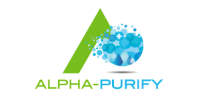Following new Ballast Water Convention (BWC) regulations, ships weighing more than 400 gross tonnes are required to control ballast water.
The regulations were set out by the International Maritime Organisation (IMO) in 2004 and came into place on 8 September 2017 to govern the control and management of ship’s ballast water and limit the environmental impact of ships moving water from one part of the ocean to another.
In time, many large ships will need to install an on-board ballast water treatment system (in the meantime ships can exchange ballast water mid-ocean), and every new-build ship will have a system installed.
This has triggered a noticeable increase in the sales of ballast water treatment systems for ships, tankers and large vessels, particularly systems that use UV disinfection or electrochlorination to purify water.
Recent developments in the manufacturing and operating processes of both types of system mean that they now compete on power usage and footprint parameters, even at flow rates of 1,500m³/h to 3,00m³/h or above.
There are some things to consider when choosing electrochlorination or UV disinfection ballast water treatment solutions.
UV systems and electrochlorination ballast water systems use very similar amounts of power, and in some environments, the UV option is more energy efficient. Electrochlorination systems are dependent on the temperature of the seawater being treated, which means they will use considerably more power in low-temperature conditions, whereas sea temperature has no impact on a UV disinfection system.
On average, ballast water treatment systems using UV disinfection have a smaller footprint than systems utilising electrochlorination. This is because no heaters or major auxiliaries are needed for the UV systems, this also makes them easier to install and slightly cheaper.
Chlorination emits both hydrogen and chlorine gases, which are toxic and highly flammable when mixed, so the process requires strict safety measures for chemical storage and handling. UV ballast water treatment requires no chemicals and emits no harmful substances resulting in it less risk, less maintenance and lower operational cost for the vessel.
Alpha-Purify manufactures replacement medium pressure disinfection lamps for a wide range of UV ballast water treatment systems, and works with equipment manufacturers to create proprietary lamps for new systems.

